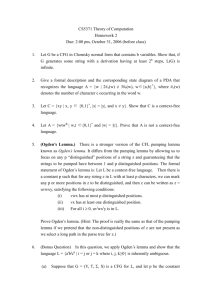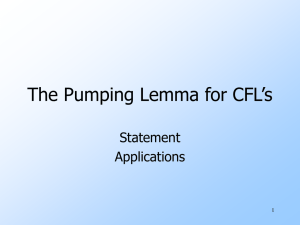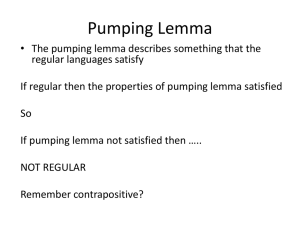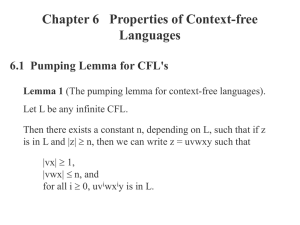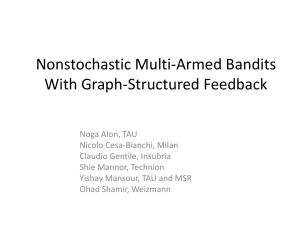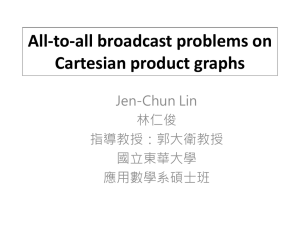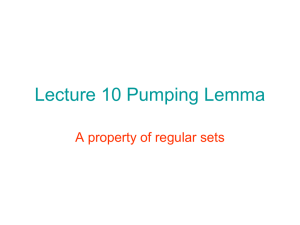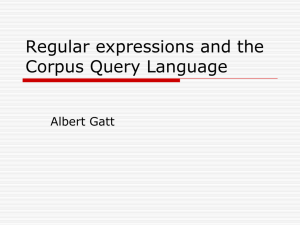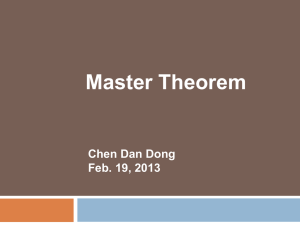Information Extraction
advertisement
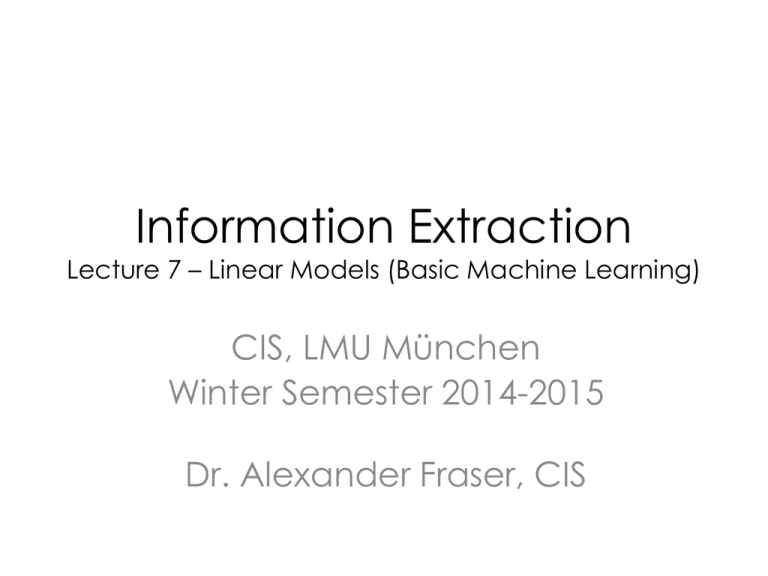
Information Extraction Lecture 7 – Linear Models (Basic Machine Learning) CIS, LMU München Winter Semester 2014-2015 Dr. Alexander Fraser, CIS Decision Trees vs. Linear Models • Decision Trees are an intuitive way to learn classifiers from data • They fit the training data well • With heavy pruning, you can control overfitting • NLP practitioners often use linear models instead • Please read Sarawagi Chapter 3 (Entity Extraction: Statistical Methods) for next time • The models discussed in Chapter 3 are linear models, as I will discuss here 2 Decision Trees for NER • So far we have seen: • How to learn rules for NER • A basic idea of how to formulate NER as a classification problem • Decision trees • Including the basic idea of overfitting the training data 3 Rule Sets as Decision Trees • Decision trees are quite powerful • It is easy to see that complex rules can be encoded as decision trees • For instance, let's go back to border detection in CMU seminars... 4 A Path in the Decision Tree • The tree will check if the token to the left of the possible start position has "at" as a lemma • Then check if the token after the possible start position is a Digit • Then check the second token after the start position is a timeid ("am", "pm", etc) • If you follow this path at a particular location in the text, then the decision should be to insert a <stime> 6 Linear Models • However, in practice decision trees are not used so often in NLP • Instead, linear models are used • Let me first present linear models • Then I will compare linear models and decision trees 7 Binary Classification • I'm going to first discuss linear models for binary classification, using binary features • We'll take the same scenario as before • Our classifier is trying to decide whether we have a <stime> tag or not at the current position (between two words in an email) • The first thing we will do is encode the context at this position into a feature vector 8 Feature Vector • Each feature is true or false, and has a position in the feature vector • The feature vector is typically sparse, meaning it is mostly zeros (meaning false) • It will represent the full feature space. For instance, consider... 9 • Our features represent this table using binary variables • For instance, consider the lemma column • Most features will be false (false = off = 0, these words are used interchangably). • The features that will be on (true = on = 1) are: -3_lemma_the -2_lemma_Seminar -1_lemma_at +1_lemma_4 +2_lemma_pm +3_lemma_will 11 Classification • To classify we will take the dot product of the feature vector with a learned weight vector • We will say that the class is true (i.e., we should insert a <stime> here) if the dot product is >= 0, and false otherwise • Because we might want to shift the values, we add a *bias* term, which is always true 12 Feature Vector • We might use a feature vector like this: (this example is simplified – really we'd have all features for all positions) 1 0 1 0 1 0 0 1 1 0 1 1 Bias term -3_lemma_the -2_lemma_Seminar -1_lemma_at +1_lemma_4 +1_Digit +2_timeid 13 Weight Vector • Now we'd like the dot product to be > 0 if we should insert a <stime> tag • To encode the rule we looked at before we have three features that we want to have a positive weight • -1_lemma_at • +1_Digit • +2_timeid • We can give them weights of 1 • Their sum will be three • To make sure that we only classify if all three weights are on, let's set the weight on the bias term to -2 14 Dot Product - I 1 0 1 0 1 0 0 1 1 0 1 1 Bias term -3_lemma_the -2_lemma_Seminar -1_lemma_at +1_lemma_4 +1_Digit +2_timeid -2 0 0 0 0 0 0 1 0 0 1 1 To compute the dot product take the product of each row, and sum this 15 Dot Product - II 1 0 1 0 1 0 0 1 1 0 1 1 Bias term -3_lemma_the -2_lemma_Seminar -1_lemma_at +1_lemma_4 +1_Digit +2_timeid -2 0 0 0 0 0 0 1 0 0 1 1 1*-2 0*0 0*0 0*0 1*0 0*0 0*0 1*1 1*0 0*0 1*1 1*1 1*-2 1*1 1*1 1*1 ----1 Learning the Weight Vector • The general learning task is simply to find a good weight vector! • This is sometimes also called "training" • Basic intuition: you can check weight vector candidates to see how well they classify the training data • Better weights vectors get more of the training data right • So we need some way to make (smart) changes to the weight vector, such that we annotate more and more of the training data right • I will talk about this next time 17 Feature Extraction • We run feature extraction to get the feature vectors for each position in the text • We typically use a text representation to represent true values (which are sparse) • We usually define feature templates which describe the feature to be extracted and give the name (i.e., -1_lemma_ XXX) -3_lemma_the -2_lemma_Seminar -1_lemma_at +1_lemma_4 +1_Digit +2_timeid STIME -3_lemma_Seminar -2_lemma_at -1_lemma_4 -1_Digit +1_timeid +2_lemma_ will NONE ... 18 Training vs. Testing • When training the system, we have gold standard labels (see previous slide) • When testing the system on new data, we have no gold standard • We run the same feature generation first • Then we take the dot product to get the classification decision • Finally, we usually have to go back to the original text to write the <stime> tags into the correct positions 19 • Further reading (optional): • Tom Mitchell “Machine Learning” (text book) • http://www.meta-net.eu/metaresearch/training/machine-learningtutorial/ 20 • Thank you for your attention! 21
